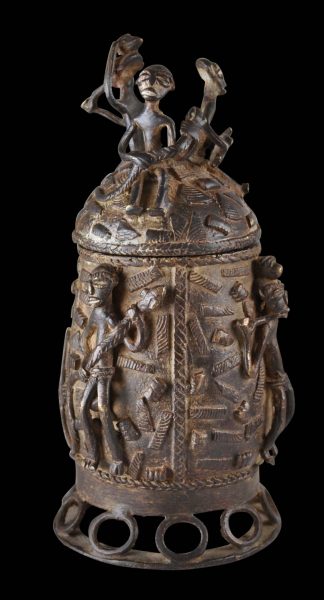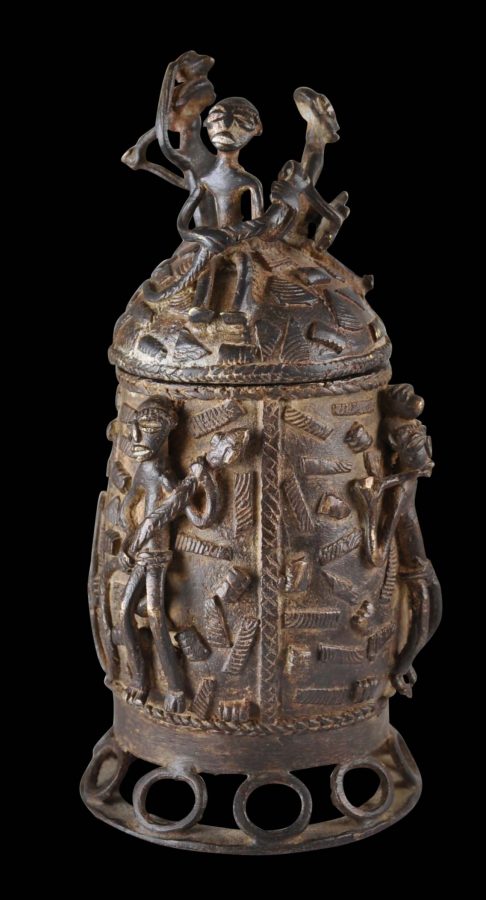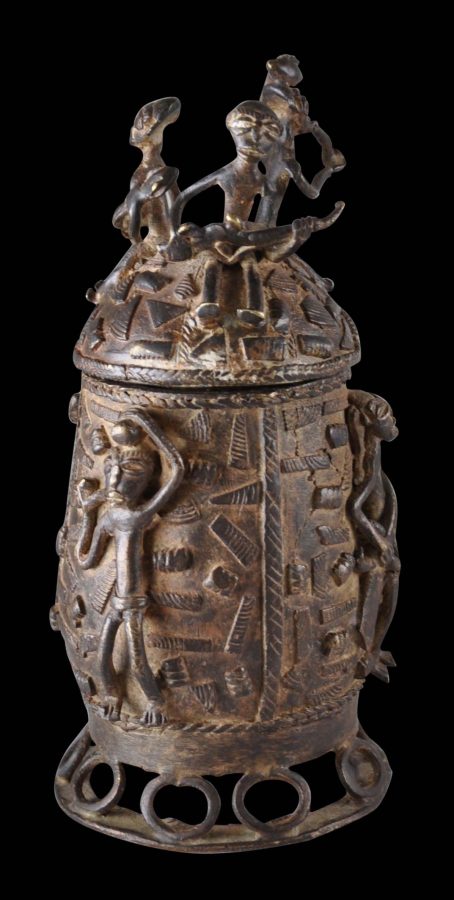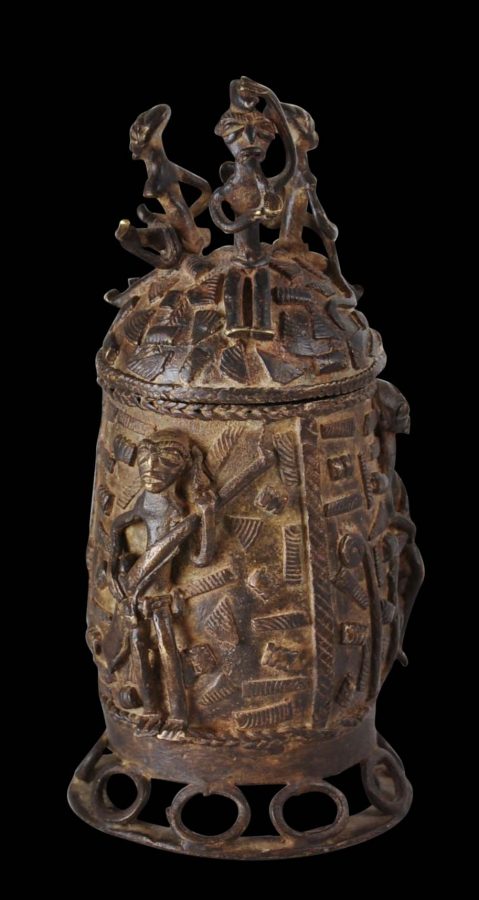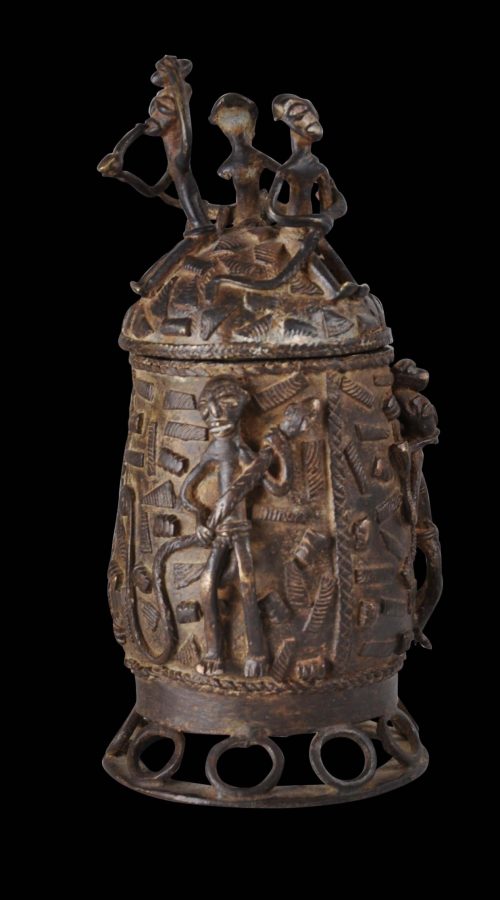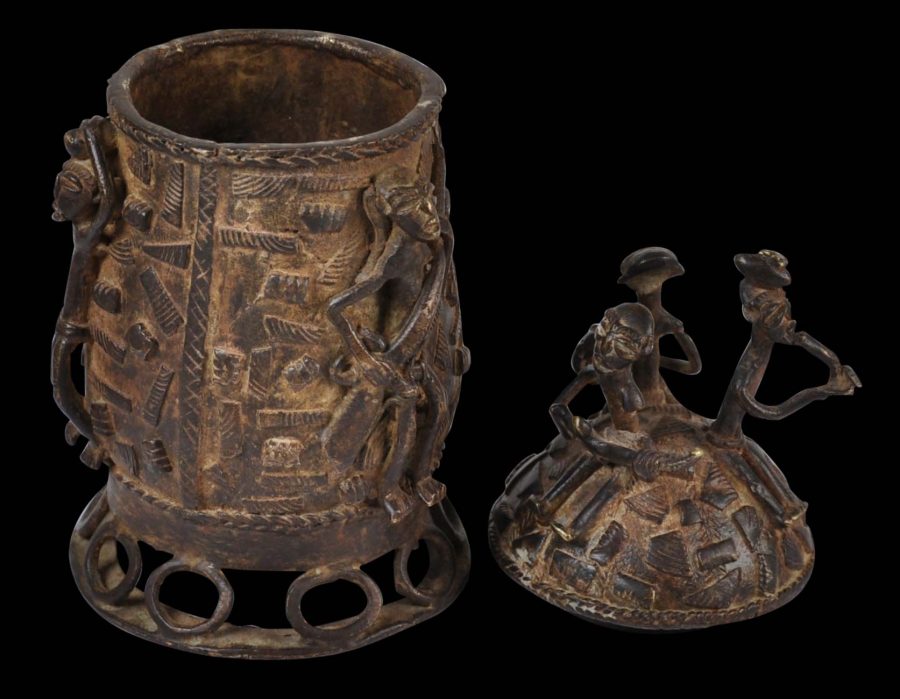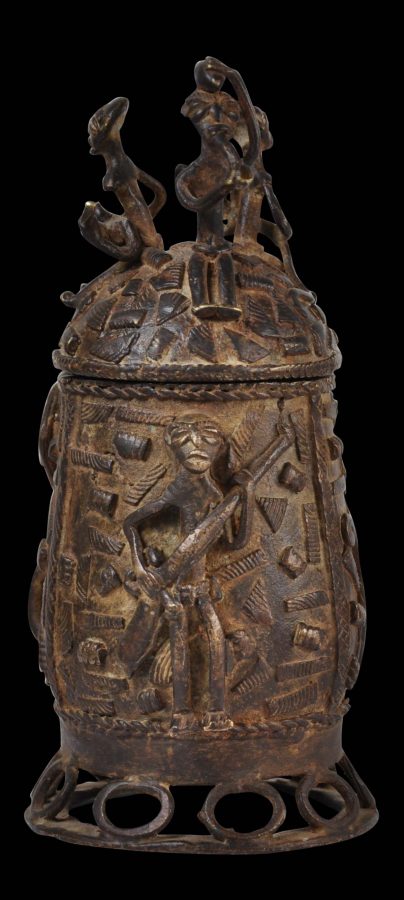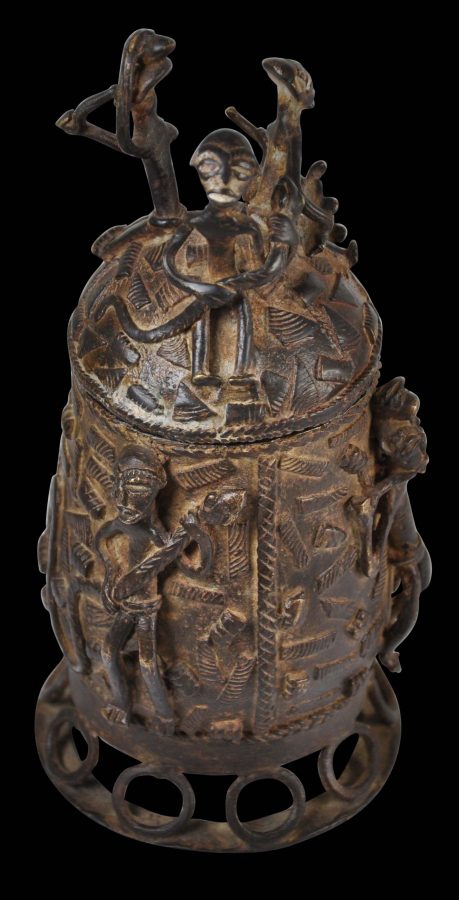Vessels such as this example of cast brass known as kuduo were used by wealthier Ashanti (Asante) people of Ghana to store valuables such as ritual objects and gold dust. Others might have been buried with people of status. Some might have been used to hold a mixture of shea butter (derived from a natural oil extracted from the but of the shea tree) and gold dust used to adorn the corpses of high-status chiefs.
This example is among the finest of its type that we have seen.
It has a tapering body and sits on a ring foot that is composed of applied brass loops. A lid sits in the vessel. The lid is surmounted with cast brass figures based themselves on gold weights. The sides of the container are also decorated with figures in high relief – one holds a python, one a musket, and so on. Additionally, the background is decorated with dozens of small, geometric shapes reminiscent of the motifs seen on Ashanti woven cloths.
As suggested, a likely use for this vessel was to hold gold dust. Gold dust became the currency used to settle everyday transactions. Each party to any transaction would typically use their own weights. The negotiating process not only would include the cost in gold dust of the items being transacted over but also a comparison of weights, debate over the scales used and the purity of the gold dust (gold often was adulterated with brass filings). Even transactions as rudimentary as buying vegetables in a street market necessitated this process.
Gold became an important commodity which gave rise to Ghana’s old colonial name of the Gold Coast. The region was known as the Gulf of Guinea and in England, a gold coin worth twenty-one shillings became known as a guinea (Phillips, 2010).
This example has an excellent chocolate-brown patina. The arm of one of the figures to adorn the lid is missing (an old break, which itself has a darkened patina) but otherwise, the container is in excellent condition.
References
Chemeche, G., The Horse Rider in African Art, Antique Collectors’ Club, 2011.
Cole, H. M. & D. H. Ross, The Arts of Ghana, Regents of the University of California, 1977.
Phillips, T., African Goldweights: Miniature Sculptures from Ghana 1400-1900, Edition Hansjorg Mayer, 2010.
Walker, R.A. (ed.), The Power of Gold: Asante Royal Regalia from Ghana, Dallas Museum of Art, 2018.


